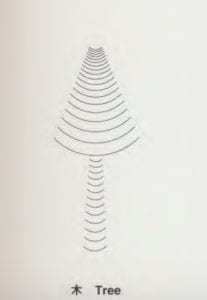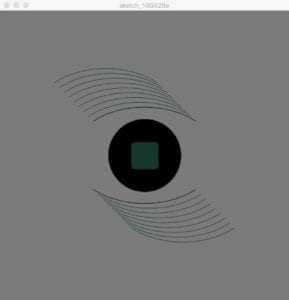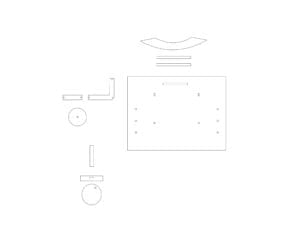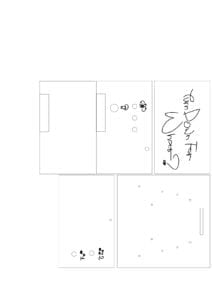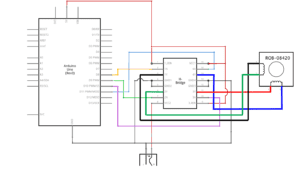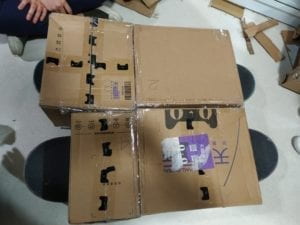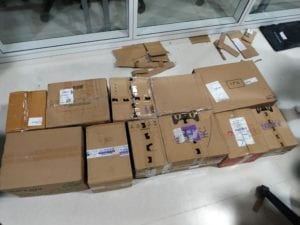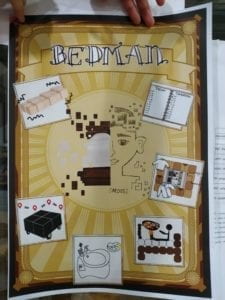Going back to my definition of interaction as I defined it during the group project, interaction is a conversation happening between two or more objects, through which they negotiate in order to give outcomes. Based on this initial definition and my experience of my midterm project, I feel my definition of interaction is becoming more specific. My midterm project was a game-box where people were able to decide how all the elements in the box would be combined in order to create a scene. On my way to achieve interaction in my project, I had the feeling that I was going to hand part of the job to the audience I would have. Specifically, I could not predict precisely how the audience would organize these elements and all I could do was to offer the options. Therefore, I was only the one who intended to provide a platform where people found inspiring and comfortable to share their creation.
Therefore, my definition of interaction has evolved into a more specific idea that exploring the possibility of creating a medium or platform where people have the freedom to use the tool provided to express themselves. During the process of constant re-creation, we get to know how other people’s views or even values deviate from ours. Besides, the designer of the interaction object may have an expectation of what the audience is going to do in the first place, just my partner and I did. However, our expectation was continuously modified by what the audience really did. For instance, we had two pieces of background music as the elements in the game-box and we expected that the audience should use either of them to create the scene they wanted. What we did not think of was that in the user test, one student played those two pieces of music alternatively with a certain rhythm and the effect was cool. All in all, during the interaction we intended to achieve, the expectations of both sides (the designer and the audience) were changing as interaction went on.
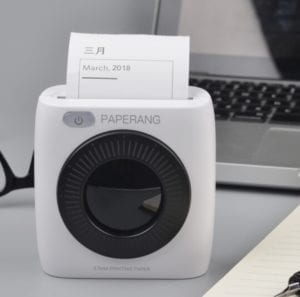
This thought resonates with the interactive object I have found inspiring. As shown, it basically is a portable mini printer. Its portability makes it more flexible to fit into people’s daily life. In the product description, people can send messages through the app and make that message printed out by this mini-printer. If you want to send a message to someone else and he/she has this printer, you can then send that to the app instead so that he/she can see a piece of physical paper printed out slowly with your words on it. Surely, communication through social media will be more efficient. But the physical form of the message, at least as I feel, is able to bring people closer. Also, this printer provides a platform for people to show their creativity. People can decide the shape of the paper and whatever to print, so it is now applied by students to printing homework questions and stick them onto to the textbook instead of hand copying, by people to printing recipe or to do list wherever they are as long as they think of it, by business people to printing their name cards instead of carrying them. It is a tool that amplifies people’s freedom to create instead of restricting it, which highly aligns with my definition of interaction.
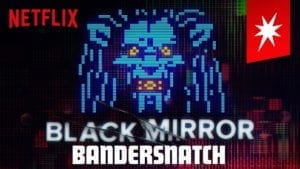
Another project I have met, on the other hand, differs from my definition. It is an “interaction” movie called “Black Mirror: Bandersnatch.” Unlike other normal movies, it provides choices while the audience is watching. Based on the choice the audience have made, they would view different storylines. That was actually a great idea of engaging the audience in film watching. I tried it online and found it fascinating at first. However, as I watched it again and made different choices, I felt that there was not much difference as if my choices did not matter that much. Perhaps it was because I expected too much, but I still felt the freedom of the audience to engage in and decide the plot was highly limited. The offered options which were claimed to have effects on the following plots were either not that effective or restricted. For instance, the audience might find none of the options was what they want to choose at all. Therefore, the feeling of being restricted large reduced the experience of interaction, which did not align with my definition of interaction.
I now perceive interaction as offering a medium for people to freely connect themselves with the world. Specifically, during the interaction, the freedom of people to create should be amplified. The designer should not inform the audience and tell them what to do. Just as what is stated in “Making Interactive Art: Set the Stage, Then Shut Up and Listen”, “Once you’ve made your initial statement by building the thing or the environment and designing its behaviors, shut up. Let the audience listen to your work by taking it in through their senses. “ Through the medium, which is the interaction designing, people are able to freely express their own views while coming across others’. As a result, our perception of a certain topic or even the world could change through interaction.
